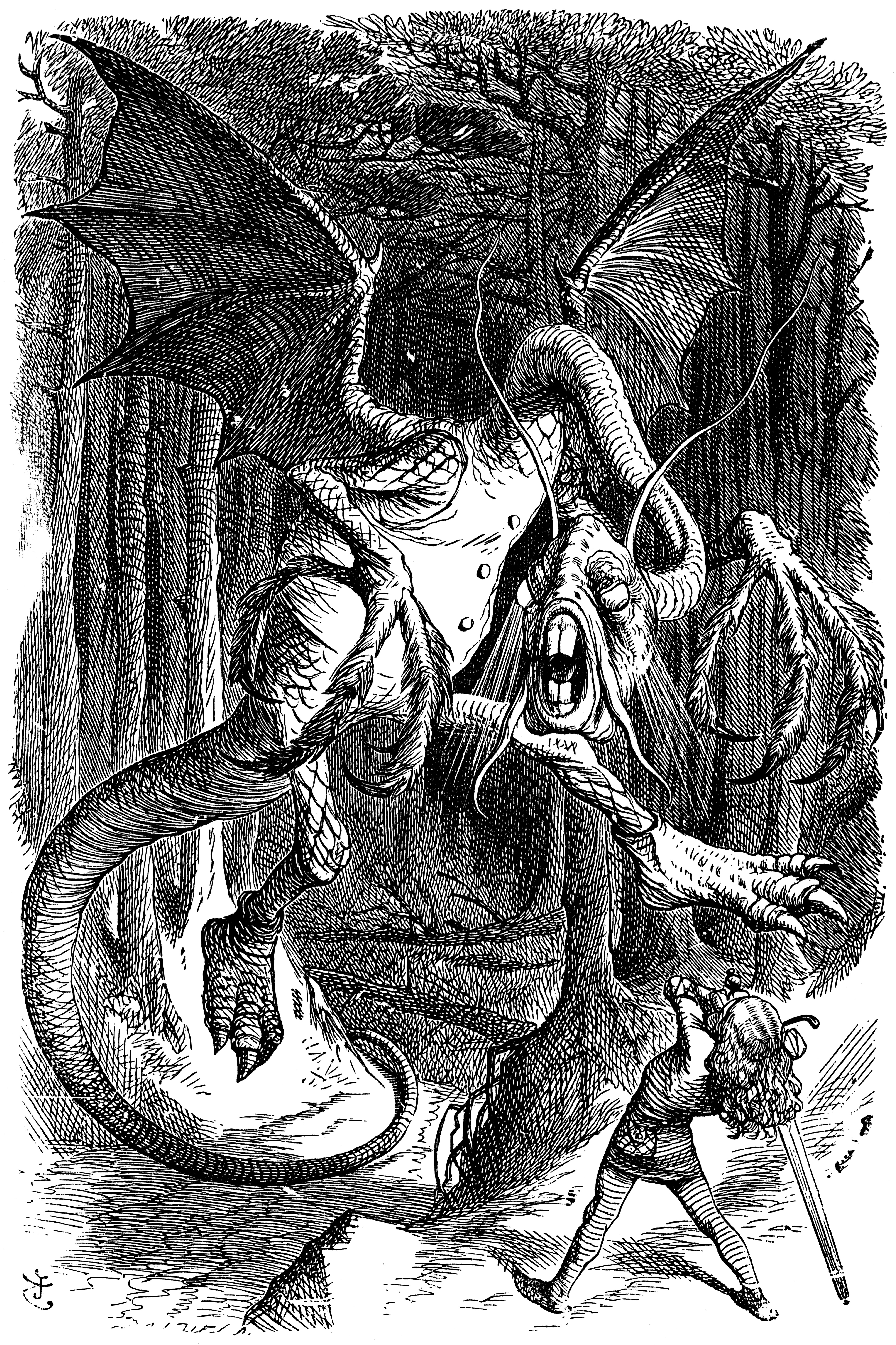
Jabberwocky
"Jabberwocky" is a nonsense poem written by Lewis Carroll about the killing of a creature named "the Jabberwock". It was included in his 1871 novel Through the Looking-Glass, the sequel to Alice's Adventures in Wonderland (1865). The book tells of Alice's adventures within the back-to-front world of the Looking-Glass world.
For other uses, see Jabberwocky (disambiguation).
In an early scene in which she first encounters the chess piece characters White King and White Queen, Alice finds a book written in a seemingly unintelligible language. Realising that she is travelling through an inverted world, she recognises that the verses on the pages are written in mirror-writing. She holds a mirror to one of the poems and reads the reflected verse of "Jabberwocky". She finds the nonsense verse as puzzling as the odd land she has passed into, later revealed as a dreamscape.[1]
"Jabberwocky" is considered one of the greatest nonsense poems written in English.[2][3] Its playful, whimsical language has given English nonsense words and neologisms such as "galumphing" and "chortle".
Media[edit]
A song called "Beware the Jabberwock" was written for Disney's 1951 animated film Alice in Wonderland sung by Stan Freberg, but it was discarded, replaced with "'Twas Brillig", sung by the Cheshire Cat, that includes the first stanza of "Jabberwocky".
The Alice in Wonderland sculpture in Central Park in Manhattan, New York City, has at its base, among other inscriptions, a line from "Jabberwocky".[58]
The British group Boeing Duveen and The Beautiful Soup released a single (1968) called "Jabberwock" based on the poem.[59] Singer and songwriter Donovan put the poem to music on his album HMS Donovan (1971).
The poem was a source of inspiration for Jan Švankmajer's 1971 short film Žvahlav aneb šatičky slaměného Huberta (released as Jabberwocky in English) and Terry Gilliam's 1977 feature film Jabberwocky.
In 1972, the American composer Sam Pottle put the poem to music.[60] The stage musical Jabberwocky (1973) by Andrew Kay, Malcolm Middleton and Peter Phillips, follows the basic plot of the poem.[61][62]
Keyboardists Clive Nolan and Oliver Wakeman released a musical version Jabberwocky (1999) with the poem read in segments by Rick Wakeman. [63] British contemporary lieder group Fall in Green set the poem to music for a single release (2021) on Cornutopia Music.[64][65]
In 1978, the musical group Ambrosia included the text of Jabberwocky in the lyrics of "Moma Frog" (credited to musicians Puerta, North, Drummond, and Pack) on their debut album Ambrosia.[66]
In 1980 The Muppet Show staged a full version of "Jabberwocky" for TV viewing, with the Jabberwock and other creatures played by Muppets closely based on Tenniel's original illustrations. According to Jaques and Giddens, it distinguished itself by stressing the humor and nonsense of the poem.[67]
The Jabberwock appears in Tim Burton's Alice in Wonderland (2010), voiced by Christopher Lee, and is referred to as "The Jabberwocky". An abridged version of the poem is spoken by the Mad Hatter (played by Johnny Depp).[68][69]